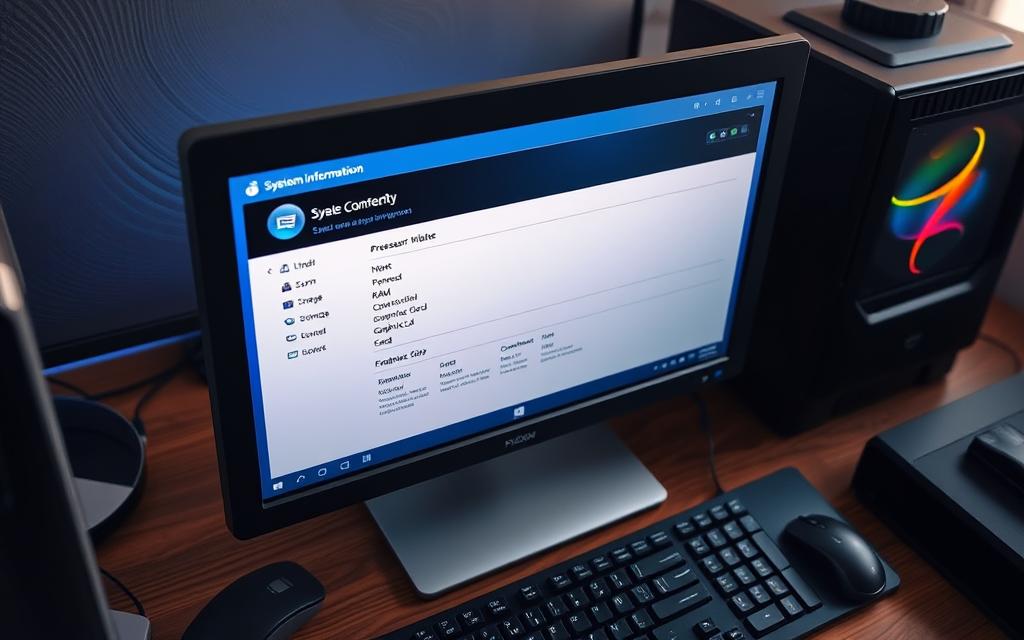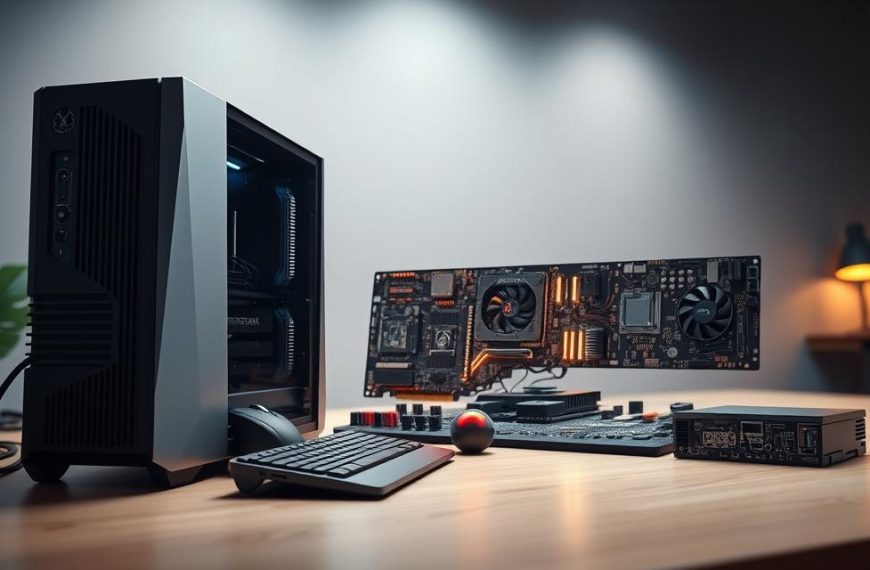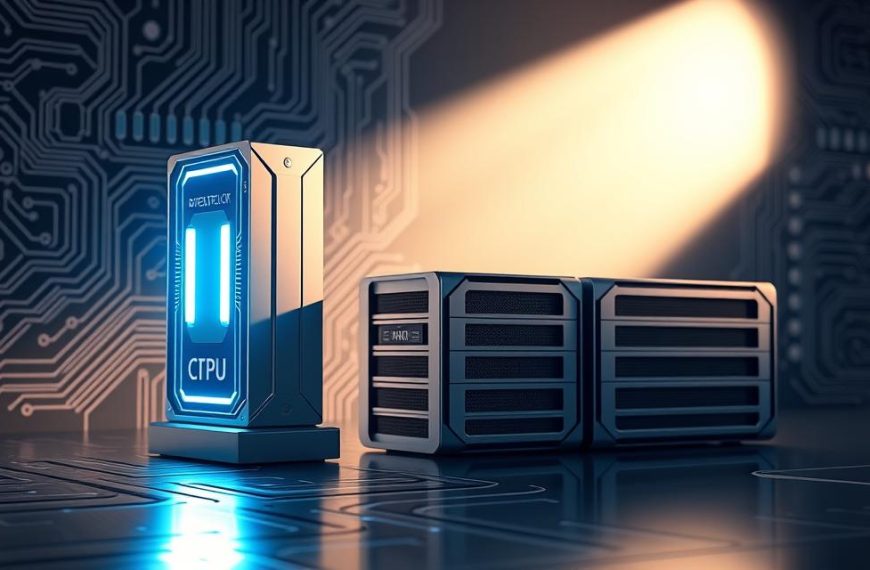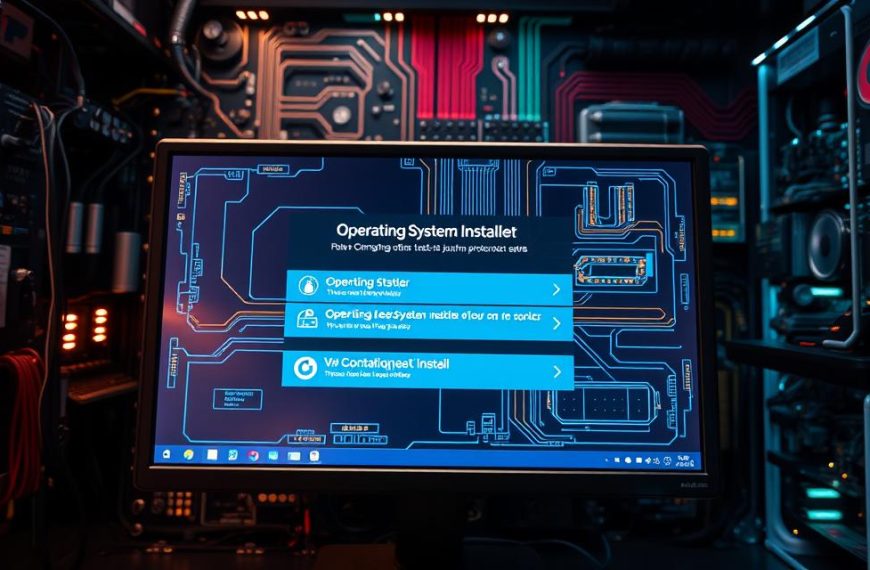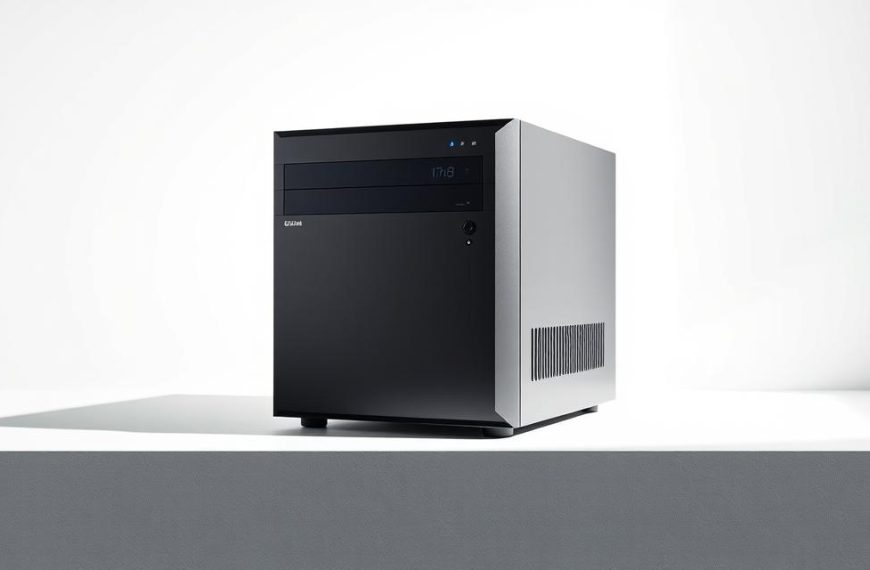Knowing your computer’s specs is key for any user. It’s vital when installing new software or planning upgrades. Having the right computer hardware details is essential.
Gamers need this info for top performance. Professionals check it for software compatibility. Even casual users find it useful to have their system information at hand.
This guide shows you how to check PC specs easily. You’ll discover simple methods for all skill levels. Let’s dive into these important steps together.
Understanding Computer System Configuration
Your computer’s system configuration is like a blueprint of its technical features. It shows how fast it can process information and how well it can display graphics. It also affects how stable the system is.
System configuration is made up of two main parts: hardware components and software settings. Together, they make your computer work the way it does.
The hardware is the foundation. The processor (CPU) is like the brain, handling all the calculations. Memory (RAM) is where programs and data are temporarily stored.
Storage drives (HDD/SSD) keep your files safe forever. The graphics card (GPU) handles all the visuals. And the motherboard connects everything together.
“Understanding your hardware specifications is the first step toward optimising system performance and compatibility.”
Software settings are the other half of the equation. They include things like the operating system, driver settings, and system preferences. These settings decide how the hardware is used.
Microsoft offers system configuration tools to manage these settings. These tools let you change startup programs, service settings, and how the system boots up.
Knowing both hardware and software is key to understanding your computer. It’s important for upgrading, fixing problems, or making sure software works well.
How to Find the Configuration of a Computer System Using Windows Settings
Windows Settings is the easiest way to check your computer’s setup. It’s a built-in tool that lets you see important system details easily. You don’t need to be tech-savvy or use extra software.
Accessing System Information via Settings
Start by opening the Settings app. You can find it in the Start menu or by pressing Windows key + I at the same time.
For Windows 10 specs, go to System > About. Here, you’ll see your device’s basic info like edition, version, and when it was installed.
Windows 11 users should go to Settings > System > About. The layout is a bit different, but it shows the same key system details.
Checking Device Specifications
In the About section, you’ll find important device specifications. This includes the processor type, RAM, and whether it’s 32-bit or 64-bit.
Both Windows 10 and Windows 11 make this info easy to see. It helps you know if your system can run certain software or if you need an upgrade.
For Windows 11 specs, you might see extra details like security features and warranty info. The layout is designed to be easy to use, with info grouped logically.
Don’t forget to check for updates often. Microsoft keeps improving the Settings app, adding new features and making it better organised.
Using System Information Tool for Detailed Configuration
Windows has a built-in utility that gives you detailed system information. The System Information tool shows you everything about your computer’s hardware and software.
This tool is great for tech experts and support staff. It organises information into categories. You can find out about every part of your system.
Launching System Information
Starting the System Information tool is easy. You can use different methods to open it.
One quick way is through the Run dialog box:
- Press Windows Key + R to open the Run dialog
- Type msinfo32 in the text field
- Press Enter or click OK
You can also search for “System Information” in the Start menu. It will show up in the search results.
Interpreting System Summary and Components
The system summary is the first thing you see. It gives you an overview of your computer’s main specs.
It shows your operating system, processor, BIOS version, and memory. This helps you understand your system’s strengths.
The hardware resources section has detailed technical info. It includes information on device management, DMA channels, and memory addresses.
The Components section is most useful for most users. It details each hardware component with specific information.
| Component Category | Information Provided | Practical Use |
|---|---|---|
| Display | Graphics card details, driver version | Graphics performance assessment |
| Storage | Drive models, partitions, sizes | Storage capacity planning |
| Network | Adapter details, connection status | Troubleshooting connectivity issues |
| Sound Device | Audio controller, driver information | Audio configuration and troubleshooting |
The Software Environment section gives info on running tasks, modules, and startup programs. It helps spot software problems or performance issues.
To use msinfo32 well, you need to know what each section means. The tool’s search function makes finding specific info easy.
You can save the system report as a text file. This is useful for technical support or documentation.
Command-Line Methods for Advanced Users
For those who love digging deep into system details, command-line tools are perfect. They offer precise control and customization. These tools give you raw data, ideal for scripting and detailed audits.
Using Command Prompt for System Details
The Windows Command Prompt has simple commands for system checks. They’re great for fast checks or when graphics are limited.
Running Systeminfo Command
The systeminfo command gives a full system overview. Just open Command Prompt and type:
systeminfo
This command shows lots of info, like:
- OS name and version
- System manufacturer and model
- Processor specs
- BIOS version and install date
- Physical memory details
Other Useful Commands
There are more commands for specific info:
| Command | Function | Output Includes |
|---|---|---|
| wmic memorychip list full | Memory specs | Speed, capacity, manufacturer |
| driverquery | Installed drivers | Driver names, versions |
| systeminfo | find “Total Physical Memory” | Filtered memory info | Total RAM installed |
Using PowerShell for Detailed Data
Windows PowerShell is great for deep system analysis. Its cmdlet architecture is perfect for complex queries and data export.
Retrieving Hardware Information with Get-WmiObject
The Get-WmiObject cmdlet lets you deeply check system info. For example, to get processor details:
Get-WmiObject -Class Win32_Processor
This command shows processor info, like:
- Current clock speed
- Number of cores
- Manufacturer details
- Architecture type
Exporting Configuration Data
PowerShell is great for formatting and exporting system info. This command exports all system details to a text file:
Get-ComputerInfo | Out-File -FilePath C:\system_report.txt
For specific data, you can filter and export:
Get-WmiObject -Class Win32_DiskDrive | Select-Object Model, Size, InterfaceType | Export-Csv -Path C:\storage_info.csv
These command-line methods give tech-savvy users flexible, scriptable ways to manage system data. They go beyond what graphical tools can do.
Third-Party Tools for In-Depth Analysis
Windows has great tools for checking your system. But, third-party apps offer more features. They let you monitor your system in real-time and check hardware details.
Using Speccy for Real-Time Monitoring
Speccy is a top tool for system info, made by Piriform. It’s easy to use and shows live data about your computer.
It gives you detailed info on:
- Processor specs and temperatures
- RAM and how it’s being used
- Motherboard and BIOS details
- Graphics card and performance
Speccy is great for watching your system’s temperature. It helps you see how hot your system gets when it’s working hard. It’s easy for anyone to use, making it perfect for quick checks or keeping an eye on your system.
Analysing Hardware with CPU-Z
For deep hardware info, CPU-Z is the best. It gives you all the details about your processor, motherboard, and memory.
It makes complex info easy to understand:
- CPU name, number, and package details
- Core voltage and clock speed
- Mainboard model and BIOS info
- Memory type, size, and module specs
CPU-Z details are very accurate. It gets info straight from your hardware. This is why tech fans and overclockers love it.
Online Tools for Upgrade Compatibility
Online scanners also help with upgrades. The Crucial System Scanner is a good example. It checks your system and suggests memory upgrades.
This tool works in your browser and doesn’t need to be installed. It finds your memory setup and shows upgrade options from Crucial.
These online tools are great for planning upgrades. They check your system against manufacturer specs to find the best parts.
Speccy, CPU-Z, and online tools like Crucial offer unique benefits. They add to what Windows can do, meeting different user needs.
Conclusion
This guide has shown you how to find your computer’s configuration. We’ve covered from basic Windows Settings to advanced tools. Each method has its own benefits, depending on your skills and what you need.
When picking a tool, think about your technical skills and what info you need. Windows Settings is great for simple users. System Information is better for those who need more details. For advanced users, Command Prompt and PowerShell are the way to go.
For detailed analysis, tools like Speccy and CPU-Z are perfect. They give real-time info on your hardware. This guide helps you find your system’s configuration, no matter your skill level.
Knowing your computer’s specs helps you make better choices. It ensures your software works well and your system runs smoothly. Regular checks keep your system healthy and spot upgrade chances.

